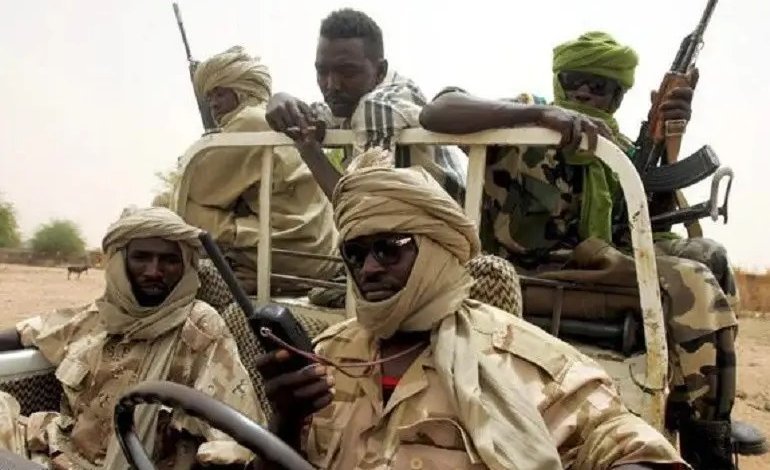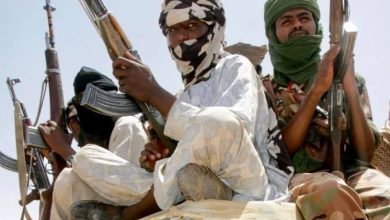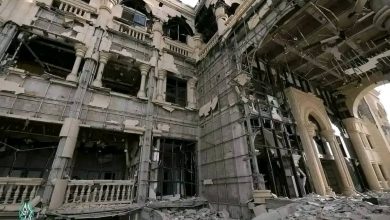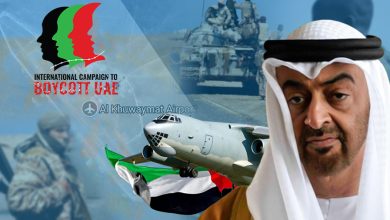What Does the Collapse of the Rapid Support Forces in Khartoum Mean? And What’s Next?

Sudan Events – Agencies
Days after losing control of the Republican Palace, the Rapid Support Forces (RSF) have retreated rapidly in Khartoum State, reaching the point of collapse and mass flight from the capital toward western Sudan.
Experts believe that the RSF’s internal structure, its family-based leadership, the destruction of its core military strength, and its failure to achieve its objectives have contributed to its downfall. They predict that the RSF will shrink back to the Darfur region and lead an insurgency against the state from there, similar to what armed movements did around 22 years ago.
Recently, the RSF has suffered consecutive setbacks, forcing it to withdraw from several areas in Khartoum State. This came after the Sudanese army expelled it from Gezira and Sennar states, as well as parts of North Kordofan, northern White Nile State, and southwestern Blue Nile region.
Since last Sunday, RSF elements have begun withdrawing from neighborhoods in the capital and dismantling their positions, leaving behind weapons and vehicles.
A Large-Scale Operation
In a massive ground operation last Wednesday, the Sudanese army stormed Khartoum International Airport and seized extensive military and civilian sites in the eastern and southern parts of the capital, reclaiming them from the RSF. This brought the army closer to declaring Khartoum State free of RSF forces, which had dominated most of it since the war began nearly two years ago.
Television cameras and social media documented RSF fighters fleeing en masse across the Jebel Aulia dam bridge south of Khartoum. Some abandoned their vehicles and fled on foot as the army advanced into the area, which was the RSF’s last major stronghold in the capital.
Videos on social media also captured citizens celebrating in southern and eastern Khartoum neighborhoods as the army entered. Residents welcomed the troops with chants of “One army, one people,” while ululations and tears of joy were seen as people recounted the hardships they endured under RSF control, including torture, abuse, and starvation.
On the military front, the army regained control of air defense and chemical weapons headquarters, the national service command in the Al-Amarat area of central-southern Khartoum, the Yarmouk defense industries complex in the south, the Central Reserve Forces headquarters under the police, and the 1st Mechanized Brigade in Al-Baqir, located at Khartoum’s southern entrance near Gezira State.
The army also seized the RSF’s largest military base in the Taiba area of southern Khartoum, which served as a key supply center for weapons, military equipment, and fuel. The base, which included underground fortifications, was reportedly built with the assistance of foreign experts.
Army spokesman Brigadier General Nabil Abdullah stated that the Taiba camp was the last stronghold of what he called the “Dagalo militia” in central Sudan and Khartoum. He added that the remaining RSF presence in the city consisted only of isolated pockets that would soon be eliminated.
Additionally, the army secured the Soba Bridge connecting eastern and southern Khartoum, as well as the western section of the Manshiya Bridge linking the East Nile neighborhoods to central Khartoum, having already controlled the eastern entrance of the bridge earlier.
A Westward Shift
The army also regained control of residential neighborhoods in eastern Khartoum, including Burri, Riyadh, Taif, Arkwit, Maamoura, and Firdous, as well as southern areas such as Al-Sahafa, Jabra, Al-Azhari, and Al-Kalakla in the Jebel Aulia locality near White Nile State. The RSF now remains in only a few pockets in the neighborhoods of Mayo, Salama, and South Al-Hizam.
Security and military expert Amer Hassan Abbas attributed the RSF’s rapid collapse in Khartoum to its fragile tribal-based structure, its family-led leadership under the Dagalo clan, the army’s destruction of its core forces in the capital and the states of Sennar and Gezira, and its loss of command and control—ultimately leading to its flight from the capital.
Speaking to Al Jazeera Net, Abbas predicted that the RSF would shift its operations to the Darfur and Kordofan regions.
He noted that while the army is capable of confronting the RSF in these areas due to its long experience in counter-insurgency warfare, the battle will not be easy, given the continued support from foreign actors supplying the RSF with weapons through border crossings. There are also indications that South Sudanese territory is being used for these supplies, as external parties aim to prolong the conflict.
A New War
The army has regained its strength and reestablished control over the central state. It is now preparing to expand westward into Kordofan and Darfur to pursue the RSF in open terrain, which is a stark contrast to the urban warfare that posed significant challenges, according to a military expert.
Meanwhile, journalist and editor-in-chief of Alyoum Altali, Al-Tahir Sati, believes that after securing Khartoum, the army will move towards Kordofan and Darfur. This advance will be reinforced by the “Hunter” force, which has arrived in Al-Obeid, the capital of North Kordofan, alongside desert forces and the joint force that recently mobilized from northern Sudan.
Speaking to Al Jazeera Net, Sati asserted that Darfur would not be a safe haven for the RSF after its retreat from the capital. The army, the joint forces, and local militias will pursue and expel the RSF from Darfur just as they were driven out of Khartoum.
The journalist revealed that RSF commander Mohamed Hamdan Dagalo, known as “Hemedti,” personally led his forces’ last operations in Khartoum. He left the city on the night the army seized the Republican Palace last Friday, accompanied by his nephew Adel Dagalo, who oversees logistics, and Idris Hassan, the RSF commander for Bahri (North Khartoum). Hemedti was later seen in Hamrat Al-Sheikh in North Kordofan before disappearing to an undisclosed location.
Meanwhile, political analyst Mohamed Alaa Eldin expects the RSF to expand its operations in Darfur and Kordofan in the coming phase. He predicts that the RSF will deploy newly acquired drones to target energy stations, telecommunications facilities, and government infrastructure to destabilize security. Additionally, the group may engage in sabotage operations through sleeper cells in stable states to compensate for its losses in the capital and central Sudan.
Speaking to Al Jazeera Net, Alaa Eldin suggested that the RSF would seek to assert its presence by attempting to control Darfur and establish its own administration, following a Libyan-style model, in order to leverage it politically for a return to Khartoum.
Source: Al Jazeera Net



